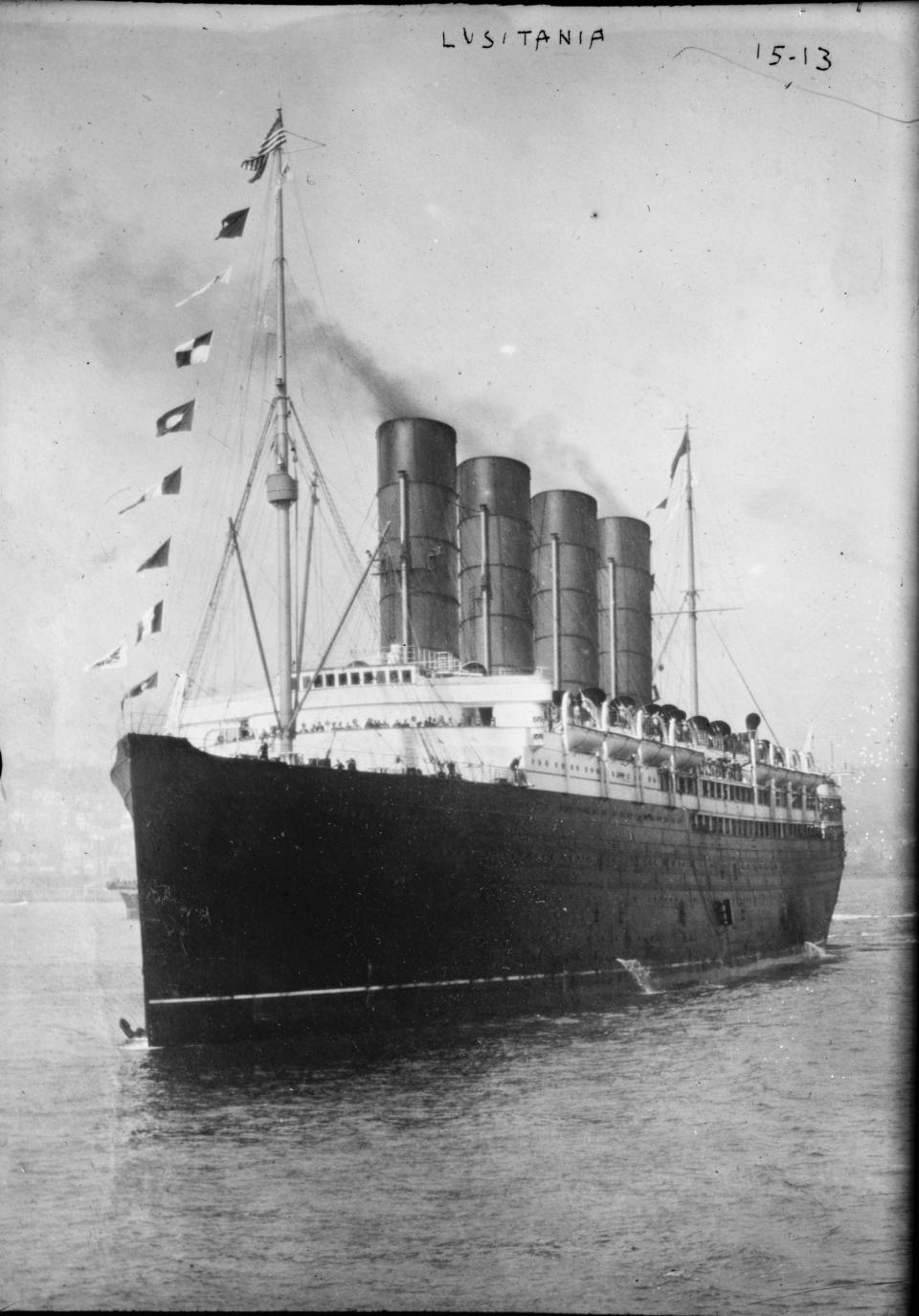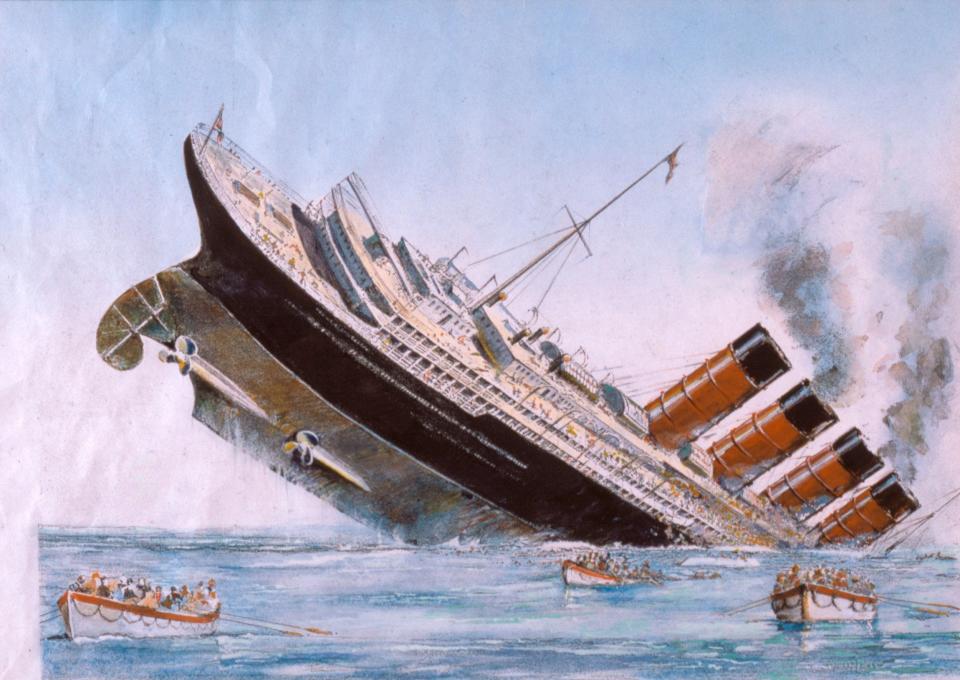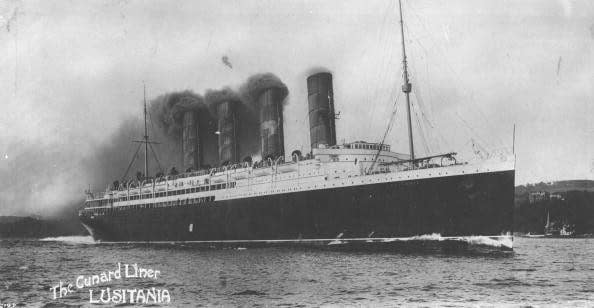Gregg Bemis, flamboyant millionaire who bought the wreck of the Lusitania – obituary

Gregg Bemis, who has died aged 91, was an American millionaire and owner of the world’s second most famous shipwreck, that of the Lusitania, the luxury passenger liner torpedoed off the coast of Ireland by a German U-boat in 1915 with the loss of 1,200 lives, among them 128 American citizens.
It was the defining act of terrorism against innocent civilians of the early 20th century, and eventually drew the United States into the First World War.
Bemis’s interest in the Lusitania had originally been piqued purely by the possibility of making money; he regarded what was left of the stricken ship – and her precious cargo of copper, bronze and silver – as a sound investment which could profitably be sold for scrap. But he quickly came to appreciate the spellbinding allure of her story, and the mystery of how she met her doom.
In particular he became exercised by the continuing debate over whether the vessel was secretly carrying war supplies from America – still neutral in 1915 – to Britain, nine months after the start of the First World War.
For the best part of half a century Bemis devoted himself to trying to establish why the huge ship sank in just 18 minutes – compared with the death throes of the Titanic, which took two hours and 20 minutes to go down – and what caused a second explosion, moments after the torpedo hit, reported by surviving passengers and other observers.
However, although Bemis subscribed to the widely held conspiracy theory that the British government was anxious to conceal the presence of munitions in the Lusitania’s hold, he never managed to clinch his argument with absolute proof.
The Cunarder was steaming from New York to Liverpool when the torpedo struck at 2pm on May 7 1915. Fifteen seconds later, another, even more powerful explosion rocked the ship; she sank, bow first, in a mere 18 minutes.
On both sides of the Atlantic the sinking was depicted as a heinous crime against non-combatants, and when America finally joined the military alliance against Germany in 1917, the sinking was cited by many as a justification.
Although Bemis controlled the salvage rights to one of the most historically significant shipwrecks of the modern era – second only to the Titanic – his efforts to solve the mystery of why the Lusitania sank so quickly were thwarted by the Irish government, which regarded the ship as part historic monument and part war grave, a fragile archaeological site that could be desecrated if Bemis had physically altered its remains.

Launched in 1906, the 790ft Lusitania – so fast, sleek and opulent that she was named the Greyhound of the Sea – held the speed record for crossing the Atlantic until 1909, when she lost it to her sister ship, the Mauretania.
Among the passengers on her last voyage were a number of eminent politicians, artists, academics and businessmen, as well as the Irish art collector Sir Hugh Lane, who was reported to have had with him on board paintings by Titian, Monet and Rubens, each encased in a protective lead tube.
This revelation led to the Irish government placing an “underwater cultural heritage order” on the ship to dissuade treasure hunters, blocking Bemis and other divers from bringing artefacts to the surface.
A flamboyant and outspoken figure, Bemis had owned the Lusitania wreck since 1982, buying the salvage rights as an investment and estimating the scrap value of the steel, bronze, and brass on the historic ship at about $12 million. But as the years passed he sank so much of his own fortune into trying to solve the secret of her sinking that his expenses had long ago outstripped her salvage value.
The ship lies 11½ miles off the coast of southern Ireland in 300 feet of water. To dive that deep, Bemis wore a dry suit (which, unlike a wet suit, is sealed so that no water can get in) and breathed a mixture of helium, nitrogen and oxygen.
Because of the inherent danger and greater atmospheric pressure in such a deep dive, Bemis could stay on the bottom for only five minutes; as far as he knew, no other diver of his age had gone so deep.
“It was very dark. There was virtually no light. Visibility was about 25 feet,” he recalled. “But the stuff down there is absolutely beautiful. I could see fixtures from the ship, and railings. Nearly everything there should be brought up and preserved. It was just beautiful, beautiful.”

Bemis descended to the wreck several times and financed several dives by others. But these explorations upset the Irish government, who assumed jurisdiction over the wreck following a change in maritime law in 1987. In a series of well-publicised legal battles, Dublin insisted that preserving the remains of the Lusitania trumped Bemis’s rights to explore his own property.
Over the years, Bemis despaired of Ireland’s cultural guardians in public utterances that dispensed with the usual niceties. Even his own legal representatives conceded that Bemis could be regarded as “a somewhat eccentric, obsessive, difficult, undiplomatic pain in the arse”, a description that Bemis himself did not dispute.
When Dublin repeatedly insisted that the government’s sole priority was to protect the Lusitania, he replied: “Protect it from what? They are not protecting it from the ravages of the ocean, nor the fishermen’s nets, nor the pirates, but only protecting it from the owner and historical truth.”
As well as his interest in the Lusitania, Bemis also investigated the fate of the Estonia, a Tallinn-Stockholm ferry boat that went down in rough seas in the Baltic in 1994 with the loss of 852 lives. Bemis suspected foul play, based on evidence gathered during an unauthorised dive he made on the wreck in 2000, and his charge prompted the Swedish authorities to issue a warrant for his arrest.
Farwell Gregg Bemis Jr was born in May 1928 in Boston, Massachusetts, into a family whose fortune derived from bag-making, and later plastic packaging.
After graduating in Economics at Stanford University in 1950, he spent two years on active service in the US Marines including a one-year tour of duty in Korea. On his return he graduated from Harvard Business School in 1954, and over the ensuing 25 years worked in the top management of three Fortune 500 companies.

He owned and ran The Ocean Corporation, which trains commercial divers and other underwater workers; he was also chairman of Deep Ocean Engineering, a world leader in the production of remotely operated underwater vehicles or ROVs. He took up scuba diving in the late 1960s, around the time he became interested in the Lusitania project.
In 1968 Bemis read a newspaper article about a friend who, with a former Navy diver, planned to build an underwater breathing system which would allow divers to work safely at then-unheard-of depths while avoiding the life-threatening effects of decompression.
Their goal was to harness such a system to salvage the Lusitania, whose rights the diver had bought for £1,000 from Britain’s War Risk Insurance Office, which had paid claims on the shipwreck decades before.
Intrigued, Bemis joined the two men in their project. Although the venture failed, Bemis and his friend retained ownership of the company’s remaining assets, including the salvage rights.
In 1982 he bought out his partner’s share for a dollar, becoming the Lusitania’s sole official “salvor”, and made his first dive on the wreck, bringing to the surface silverware, dishes and other artefacts. “I finally said, Dammit, it’s my boat, and I’m going to go down and give it a big kiss.”
His legal woes began in the mid-1980s, when the British government laid claim to the wreck. Bemis successfully proved his ownership in court, but in 1987 a change in international maritime law meant that the Lusitania now lay half a mile inside in Irish territorial waters.

Worried that she was vulnerable to plunder, Ireland’s cultural ministry, the Department of Arts, Heritage, and the Gaeltacht, placed a protective order on the vessel which remains in force to this day.
Bemis ran for Congress twice and three times for the New Mexico state legislature as a Republican. For some years he wrote an outspoken column for his local newspaper, the Santa Fe New Mexican, his conservative views putting him sorely at odds with the city’s default liberal ethos. Until this year he played soccer twice a week.
To mark the 100th anniversary of the Lusitania disaster in May 2015, Bemis and his diving partner Eoin McGarry designed a small steel plaque commemorating the victims, which was laid on the wreck’s hull just forward of the bridge. Attached to it was a watertight capsule containing the names of the dead.
Bemis was aboard the boat that took the divers to the site and could not resist taking a jibe at the Irish government with the plaque’s final line: “Hopefully someday the truth around the sinking will be revealed.”
In 2019 he signed the wreck over to a Co Cork museum group, saying that at his advanced age “there is only so much more I can do to further this project”.
Gregg Bemis was married and had five children.
Gregg Bemis, born 1928, death announced May 21 2020


